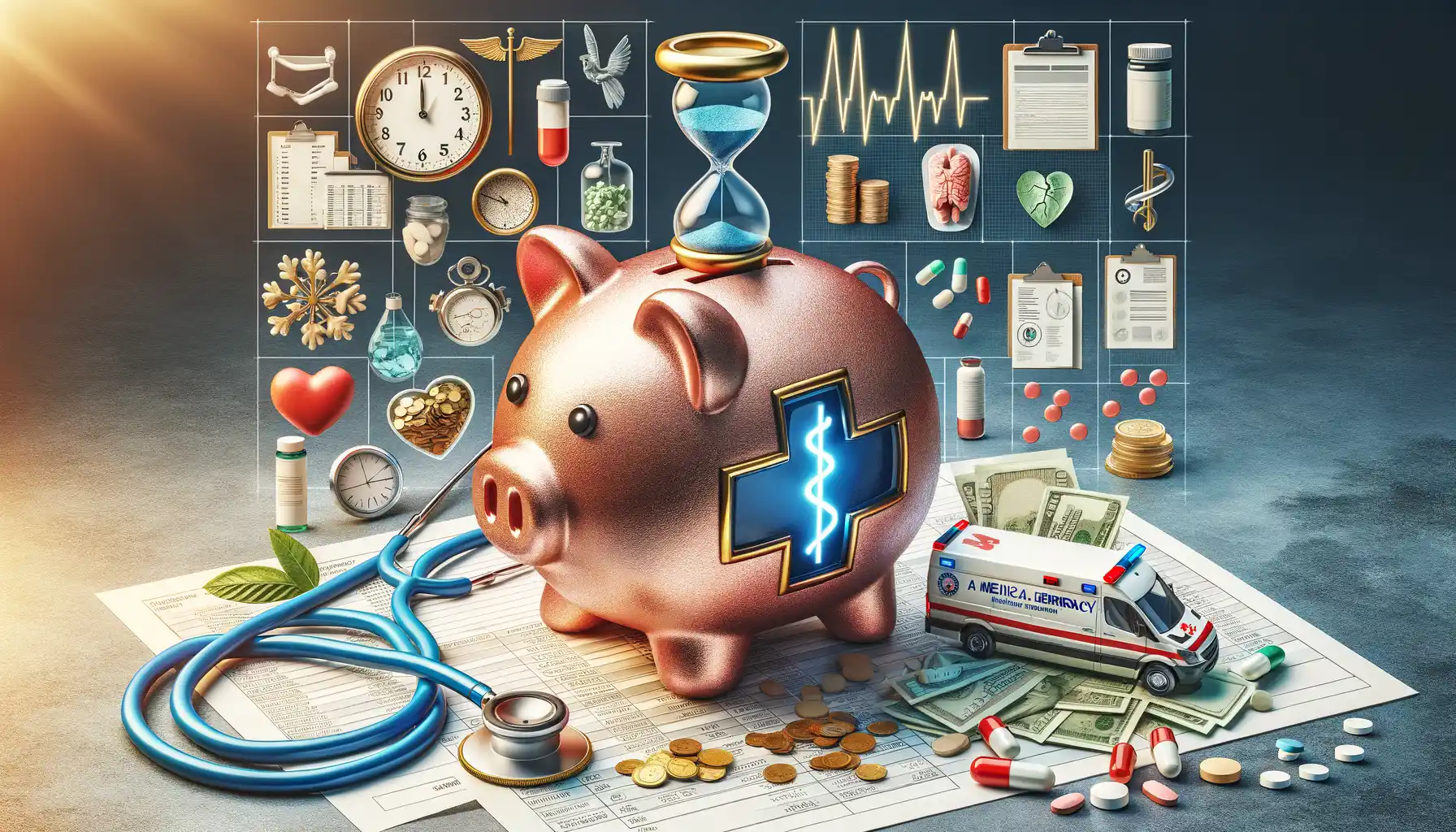Understand the Basics of Medical Costs
Why Medical Pricing Feels Like a Mystery
Navigating medical costs can feel like stepping into a foggy maze. You’re already managing your health, and now you’re handed bills that look like they were written in a secret code. Let’s break it down, piece by piece, so you’re not left guessing what you’re paying for.
Medical pricing often comes in layers. You might see charges for:
- Physician fees: The cost of seeing the doctor or specialist.
- Facility fees: Charges for using the hospital or clinic space (yes, they charge you for the room).
- Diagnostic tests: X-rays, blood work, or MRIs that help doctors figure out what’s going on.
- Medications: Anything given during treatment or prescribed after.
So, if you’re wondering why a single ER visit feels like it could rival your rent — it’s all those costs stacked together. And sometimes, they don’t even tell you upfront! Always ask for an *itemized bill*. It’s your right to know exactly what you’re being charged for.
Hidden Factors Affecting Your Bill
Here’s something they don’t tell you: medical costs aren’t one-size-fits-all. Where you live, how urgent your care is, and even the specific provider you choose can impact pricing. A quick example? An MRI might cost $400 at one facility but nearly $2,000 at another across town.
Pro tip? Opt for outpatient centers instead of hospitals whenever possible—they usually cost less. And don’t hesitate to shop around. Yes, you can compare prices for healthcare the way you would for a new phone or flight tickets. It may feel strange, but with some calls and research, you can save hundreds, if not thousands.
Explore Financial Assistance Options

Discover Programs That Can Lighten Your Load
Navigating medical expenses without insurance can feel like trying to cross a raging river without a bridge. But here’s a lifeline: countless organizations and programs exist to help ease the strain. For instance, you might qualify for assistance from your local hospital; many offer income-based financial aid or sliding payment scales. Don’t be shy—ask, dig, and advocate for yourself.
Government programs like Medicaid could be a game-changer if your income meets the requirements. Even if you think you’re not eligible, check anyway. Every state has its own rules, and you might be surprised by what doors open if you take the first step.
Where to Look When Things Feel Overwhelming
If bills have stacked up like a daunting mountain range, consider exploring:
- Nonprofit organizations: Groups like The HealthWell Foundation or PAN Foundation often help with specific diseases or medication costs.
- Prescription discount cards: Services like GoodRx can cut medication costs dramatically—sometimes even by 80%.
Also, don’t underestimate local resources. Community clinics, church organizations, and civic outreach groups may offer temporary financial relief, covering anything from routine care to urgent procedures.
Learn How to Negotiate Medical Bills

Take Control of What You Owe
Navigating a medical bill can feel like reading a foreign language—confusing, overwhelming, and downright stressful. But here’s the secret most people don’t know: those bills aren’t set in stone. Hospitals and clinics often have room to negotiate. Yes, you heard that right—you can *haggle* over medical costs just like you would at a car dealership or flea market.
Start by gathering your courage (and a copy of your bill). Look for terms like “itemized statement” or “explanation of charges.” You might discover you’re being charged $25 for a disposable ice pack or $100 for a basic bandage—sound ridiculous? That’s because it is. Use this as leverage.
Remember, negotiating isn’t pushy—it’s advocacy. You’re simply fighting for fairness, something every patient deserves.
Utilize Low-Cost and Alternative Healthcare Services

Discover Hidden Gems in Healthcare Options
Picture this—you’re feeling under the weather, but the thought of crushing medical bills hangs over your head like a storm cloud. Good news: there’s a world of low-cost and alternative healthcare services out there that could be your silver lining.
Community health clinics are a strong starting point. These gems offer quality care at sliding-scale fees designed to match your income. It’s not just basic care either—think vaccines, physicals, even mental health support. You’d be surprised how much you can access for a fraction of the price.
Another life-saver? Retail health clinics. You’ll find them in community pharmacies like CVS or Walgreens. They’re perfect when you need fast, affordable treatment for minor illnesses or check-ups without an appointment.
The Power of Students and Alternative Therapies
Let’s talk about students—as in medical, dental, and psychology students. Many training programs operate clinics where their supervised hands-on experience translates into highly affordable care. Imagine dental fillings or therapy sessions at a fraction of their regular market cost—it’s a win-win!
For non-traditional options, explore chiropractic services, acupuncture, or other holistic treatments. Often overlooked, these alternatives can address chronic pain or stress while being lighter on your wallet. Sometimes, healing doesn’t have to come with a prescription pad.
Plan Ahead and Build a Medical Emergency Fund

Why a Safety Net is Your Secret Weapon
Life has an unpredictable way of throwing curveballs, doesn’t it? Medical emergencies are no exception. One moment, you’re enjoying a lazy Sunday brunch, and the next—bam!—a hefty hospital bill lands in your lap. Now imagine having a ready-to-go safety net that cushions the blow. Sounds like peace of mind, right? That’s where a medical emergency fund swoops in to save the day.
Think of it as your personal “superhero” savings account, specifically set aside for those uh-oh moments. Start small—set aside just $10, $20, or whatever feels manageable with each paycheck. Over time, this stash will grow faster than you’d expect.
- Open a separate savings account to avoid temptation (out of sight, out of mind!).
- Automate contributions so you don’t even have to think about it—it’s like paying future-you.
- Set milestone goals: Your first $500, then $1,000, then keep climbing!
Every dollar saved is one less you’ll need to borrow during tough times. Picture yourself handling unexpected expenses with calm confidence instead of panic. Doesn’t that feel empowering?
